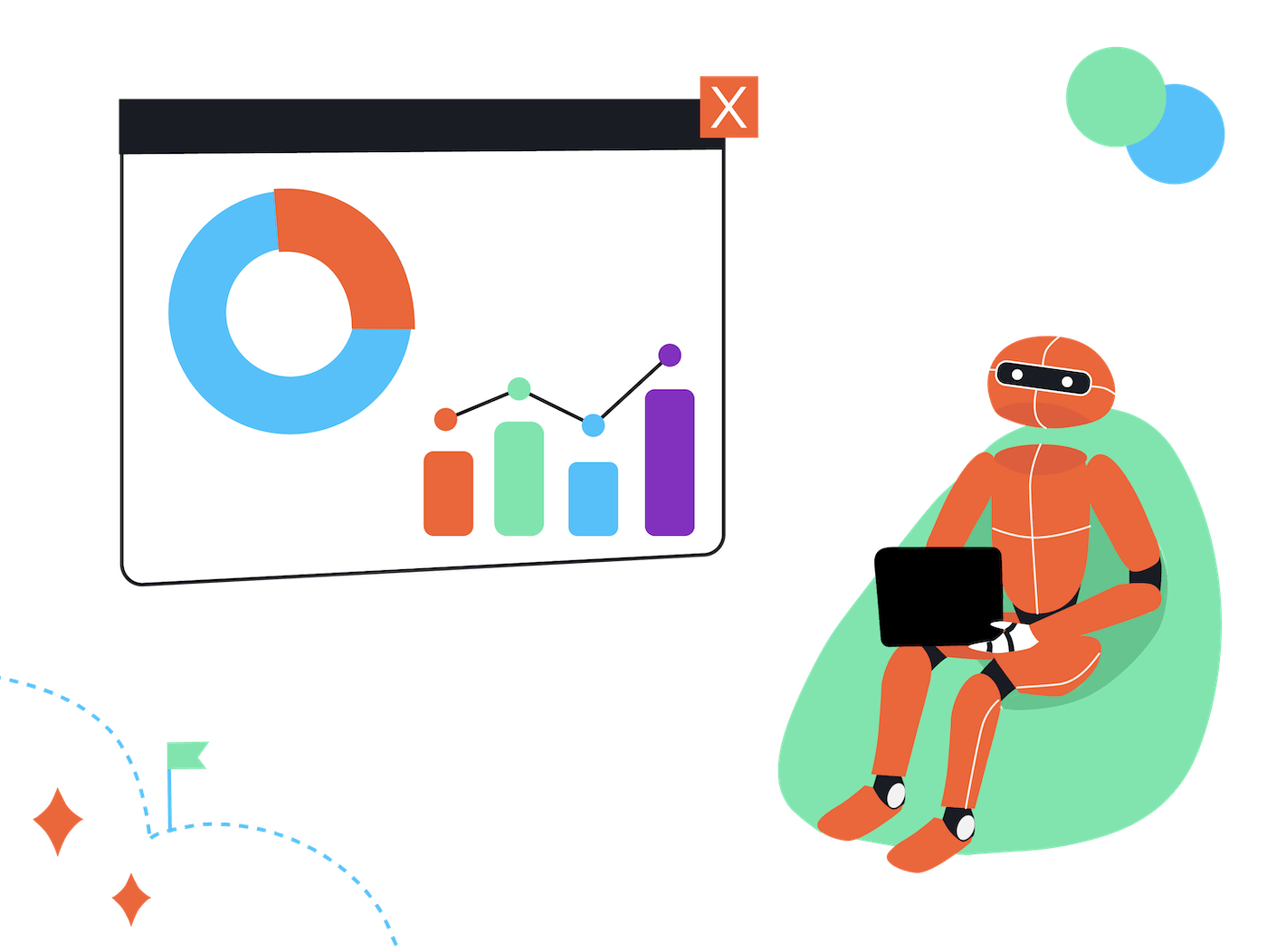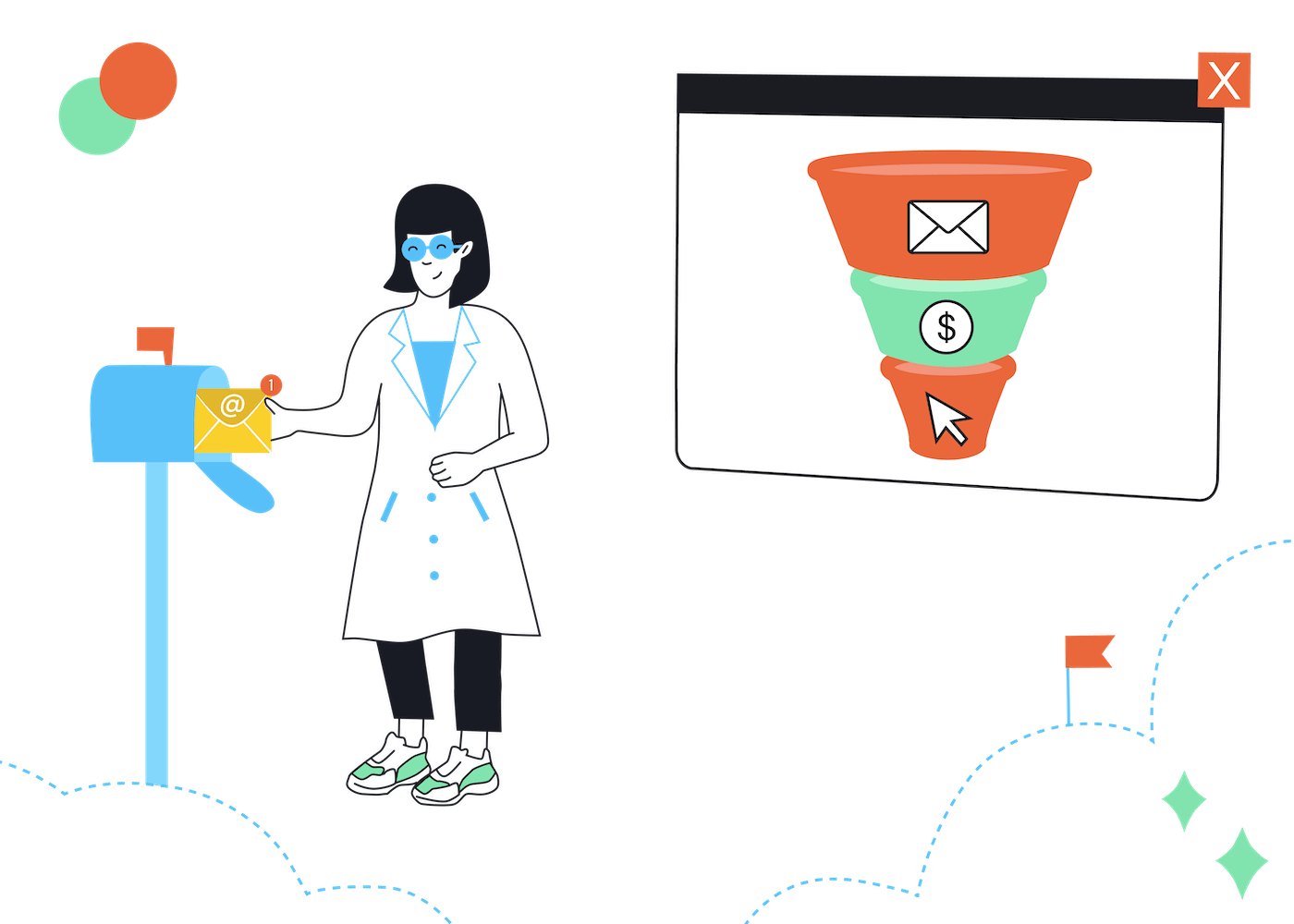Are you seeing suspiciously high open and click rates on marketing emails? Bot clicks and opens are usually responsible for distorting email marketing metrics.
While we all like to see impressive open and click rates, email scanners and scripts may be inflating those numbers artificially. That makes it difficult to measure campaign ROI.
This guide explains why bot clicks and opens are a problem – and what you can do about it.
What Are Bot Clicks and Opens in Email Marketing?
A bot click or open means that the email was opened (or clicked) by an automated script. These scripts are used to check for phishing links or viruses.
As bots ‘open’ the emails, or test the links, this activity is picked up in your campaign reporting along with regular human activity. That means your email marketing KPIs might be affected. For example:
- Your open rates aren’t an accurate reflection of real human readers, which means your A/B tests won’t be accurate either.
- If your click-through rate isn’t accurate, you can’t measure the impact of call-to-action buttons.
- Bot clicks could move people through funnels or workflows prematurely, or even unsubscribe them silently without them knowing.
We all want to increase email list engagement, but this automated activity can get in the way of the real data.
How Email Marketing Platforms Filter Bot Activity
Email marketing platforms want to give you the most accurate statistics on campaign performance.
Many have developed ways to filter out bot activity from human clicks and opens. They do this by looking for patterns:
- When bots click or open emails, they tend to click very soon after emails are sent. Humans are slower.
- Bots click on many links in a short time, while humans may only click one or two as they’re reading.
These kinds of patterns allow the email providers to filter out activity that looks like it’s come from a script and not a person.
It’s important to note that bot detection will never be 100% accurate. Additionally, different providers filter bot clicks and opens in different ways. Tackling bot activity should be part of a broader initiative to proactively manage your email lists.
Here’s a quick rundown of the ways top email marketing platforms are dealing with bot activity.
ActiveCampaign

BotSense is ActiveCampaign’s solution for bot clicks and opens. It’s available on Pro and Enterprise plans.
It filters activity in your Campaign Overview Report, Campaign Clicks Report, and Campaign Links Report. Notably, it does not filter bot activity from triggers in workflows, segments, and a few other areas. So while it’s helpful, keep in mind that your high-level reports may not be as accurate as you would hope.
What's great is that ActiveCampaign also adds a CAPTCHA to unsubscribe requests. That means bots can’t remove people from your list by accident.
Pros:
- Easy to toggle on and off for quick comparisons
- Built-in unsubscribe protection
Cons:
- Doesn’t stop triggers from firing
- Only available on Pro and Enterprise plans
- Doesn’t cover all reports
Learn more about ActiveCampaign
Klaviyo
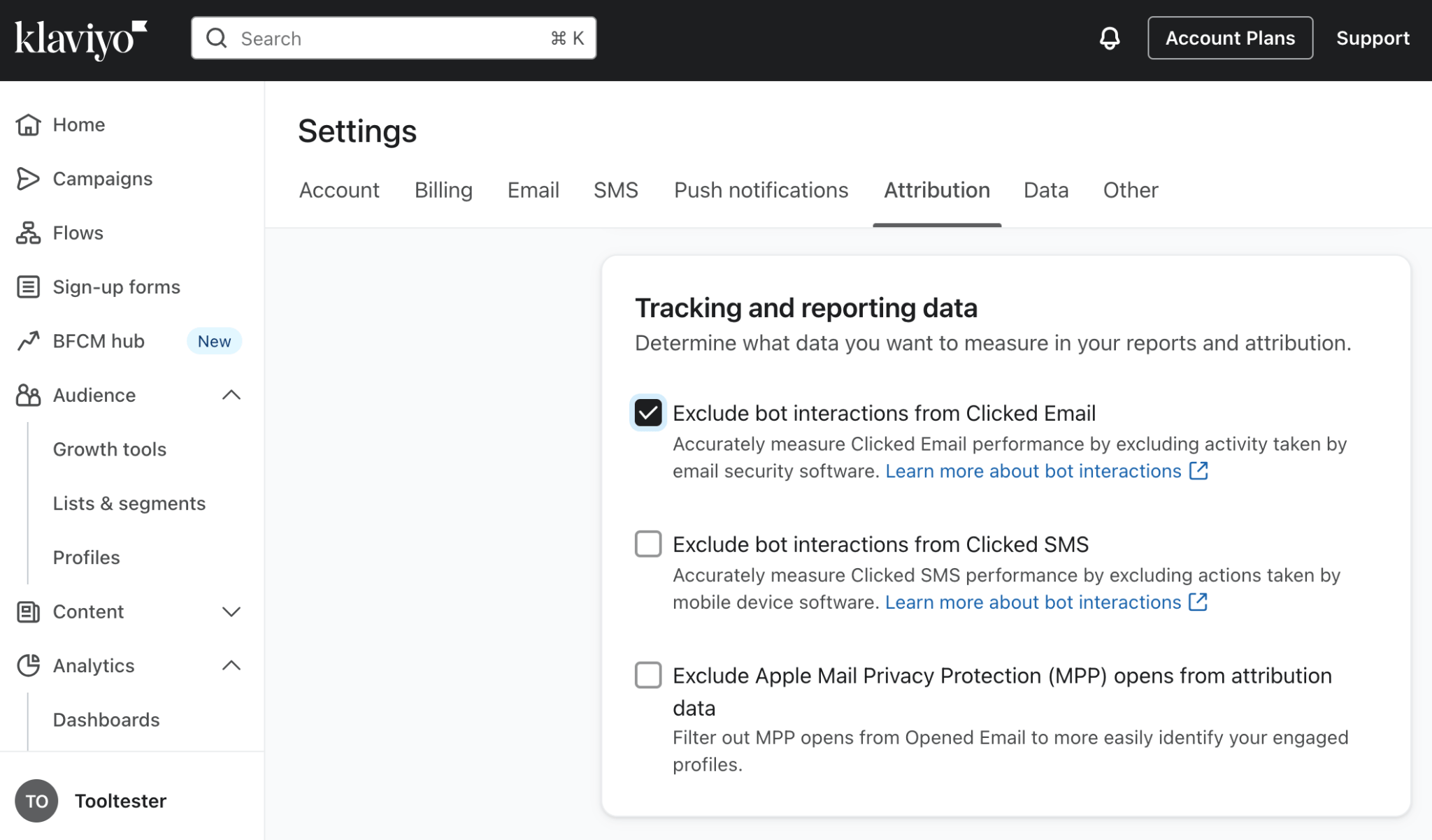
Klaviyo’s email bot protection applies to both SMS and email reports. Like ActiveCampaign, it applies in some areas and not others; email campaign trends aren’t filtered, for example.
It’s the only provider we checked that allows you to filter bot clicks separately in reporting and attribution. That means you can remove bot clicks from your reports, but keep them in revenue tracking if you need to make sure those conversions are counted.
Pros:
- Filter reports, attribution metrics, or both
- Applies to email and SMS
Cons:
- Setup is a little complex
- Applies to email and SMS
Constant Contact
Email bot filtering is enabled by default on Constant Contact email marketing reports, based on their list of known non-human user agents (security programs and bots).
There isn’t much detail on how it works and the filtering isn’t customizable. However, if you want a simple solution, this might be a good fit for you.
Given that Constant Contact can be pricey compared to other email service providers, it's a little disappointing that users don't have more control over this feature.
Constant Contact notes that its filtering can’t catch all automated activity, but it should remove a “significant portion” of bot clicks and opens.
Pros:
- Enabled by default
Cons:
- No way to customize the filtering
- Not much detail on how filtering is applied
- Basic solution compared to that offered by other ESPs
Learn more about Constant Contact
HubSpot
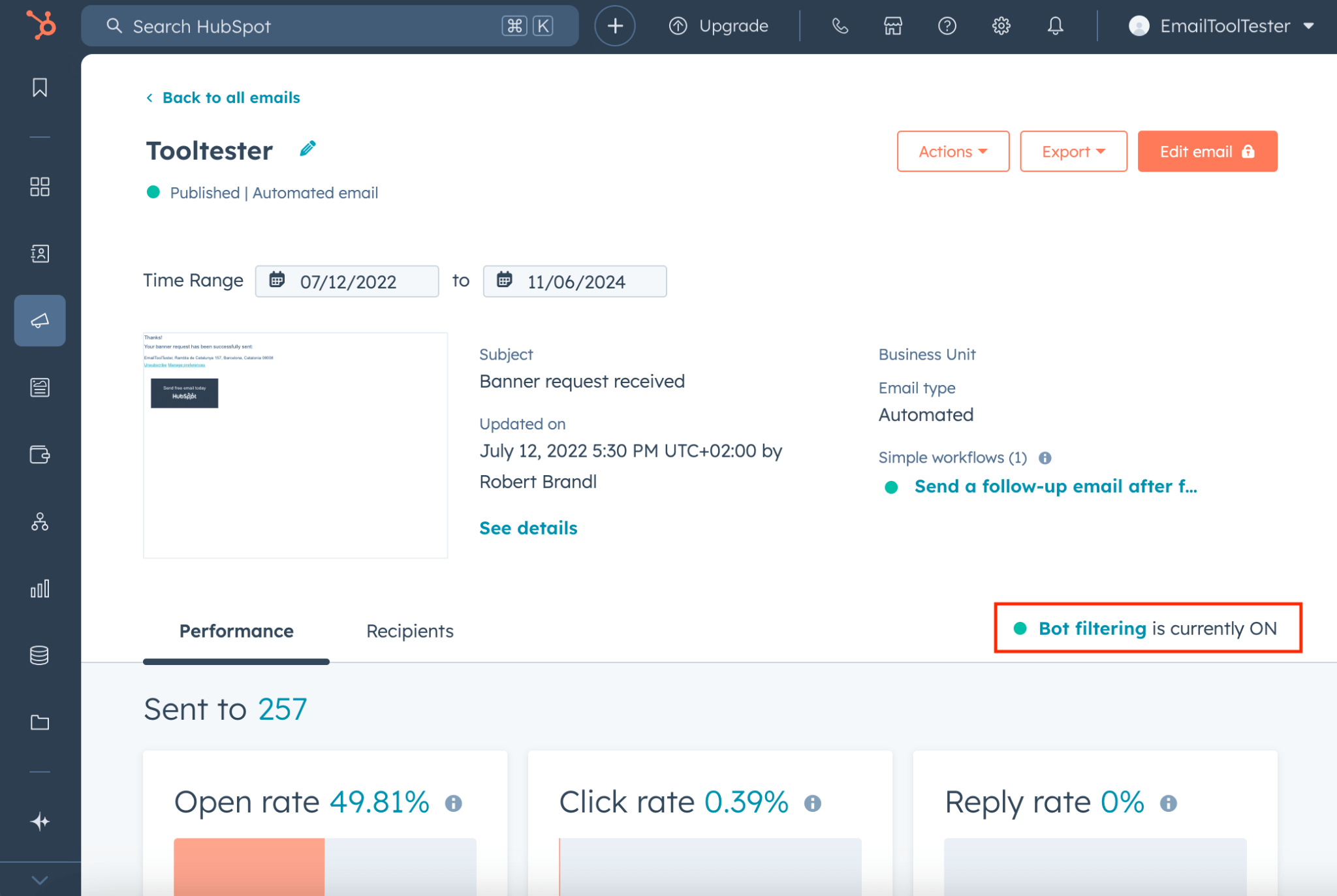
HubSpot has the most complex approach of all of the providers we checked. You can filter bot activity across your CRM, including your emails, calls-to-action buttons (CTAs), social posts, and more.
It combines its list of known bots with an option to create custom rules. That means you can filter by specific IPs and domains. While this is powerful, it means there is more setup and maintenance involved.
One important note: filtering can’t be applied retroactively. For example, if you block an IP, it won’t be excluded from any metrics that are already wrong.
Pros:
- Powerful account-wide settings
- Manual IP filtering
- Known bot filtering
- Flexible blocking options (IP addresses, ranges, domains, referrers)
Cons:
- Can’t be applied to past reports
- Manual exclusion requires ongoing maintenance
Brevo
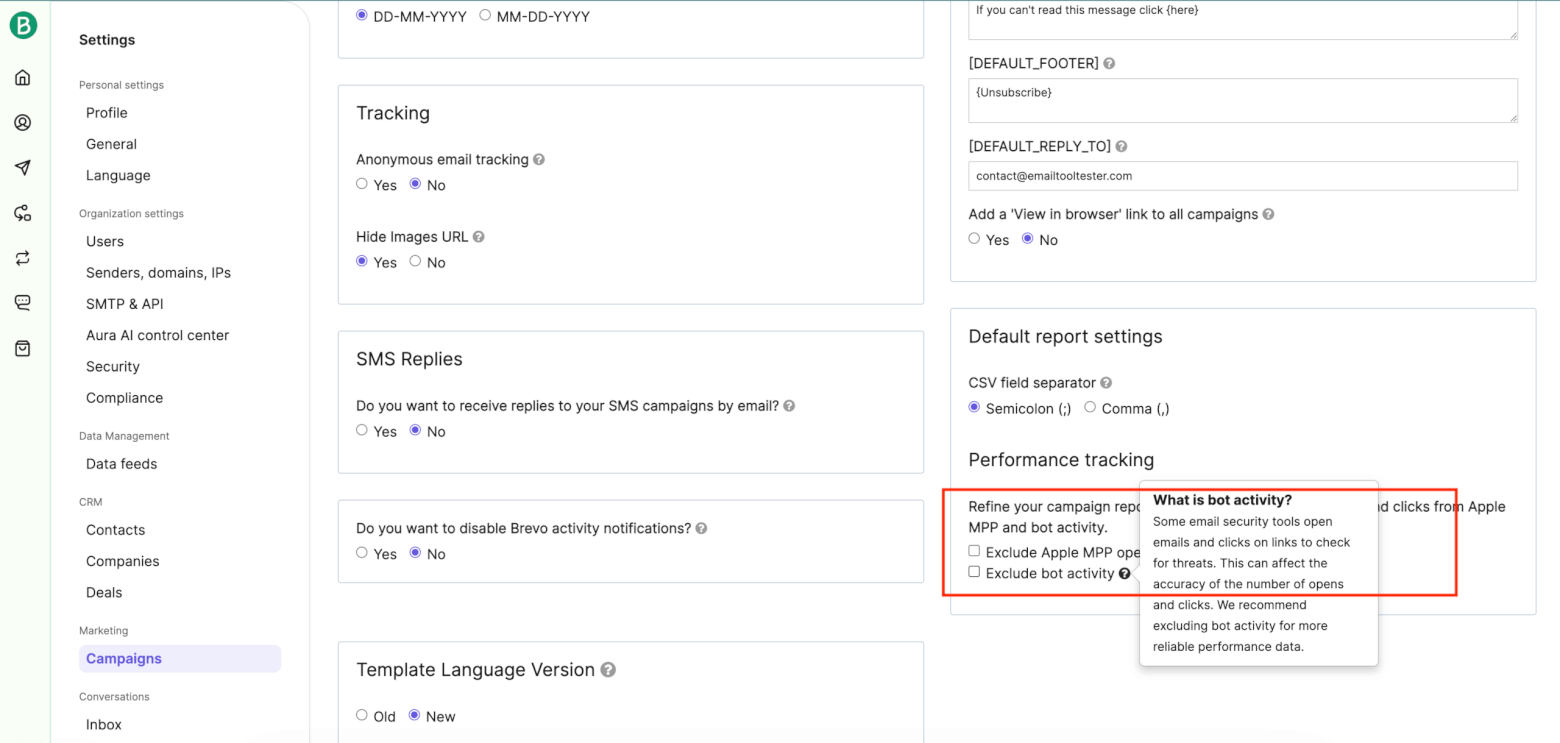
While Brevo previously filtered out bot activity by default, it's recently adopted a more flexible approach. Now, Brevo users can choose whether or not they want to exclude bot activity from their reporting.
As Brevo users ourselves, this is something we'd absolutely recommend doing. When we enabled this option, our click-through rates for a recent newsletter dropped by 9.4% – which just goes to show how heavily bot clicks can skew the results of your campaigns.
Its bot-filtering tools apply to both email and SMS campaigns.
Pros:
- Can choose whether to enable or disable bot filtering
- SMS and email filtering
- Filtering is account-wide
- Can also reduce bot sign-ups on forms with built-in tools like CAPTCHA, invisible fields, and automatic removal of freemail domains and disposable email addresses
Cons:
- Bot filtering disabled by default – you need to tick a box in order to activate it
- Not much detail on how filtering is applied
Beehiiv
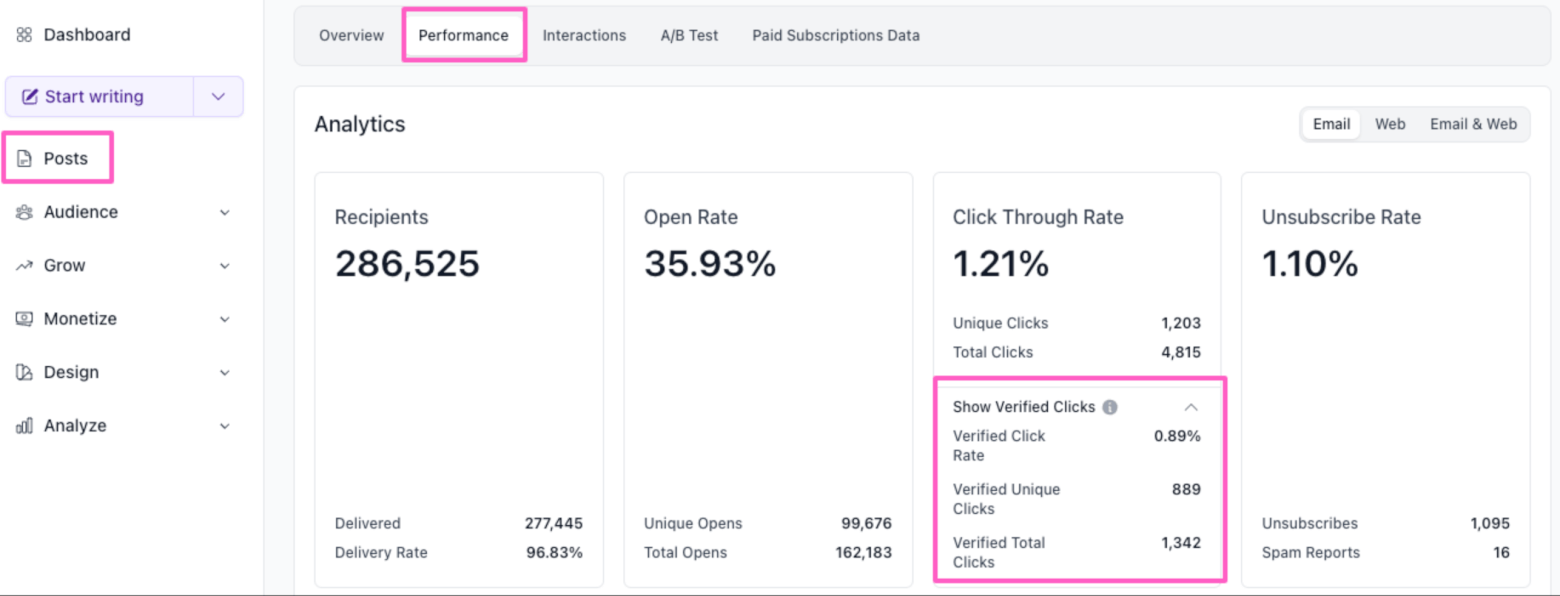
Image source: Beehiiv
Beehiiv is a newsletter platform whose popularity has exploded in recent years, partly thanks to their regular product updates. One such update is their “Verified Clicks” feature, which allows users to see which proportion of clicks are legitimate, and which are likely driven by bot-clicks.
Beehiiv uses a combination of proprietary data (including IP addresses, user agents, and click patterns) and third-party data to identify likely bot clicks, and allow users to view this in their reporting.
For Beehiiv users that sell advertising space in their newsletters on a pay-per-click basis, this feature is particularly important in helping them build trust with advertisers. For those advertising in other Beehiiv newsletters, it also helps to alleviate any concerns about paying for bot-powered clicks.
Pros:
- Activated by default
- Provides both unfiltered data and “Verified Clicks” data, giving you a more complete picture of campaign performance
- Can see verified clicks on both campaign and subscriber level, as well as in overall Clicks Report
- Covers both email and web clicks
Cons:
- Some users have complained about low numbers of verified clicks and have questioned reporting accuracy
- If a publisher is paid based on CPC (cost per click), they could end up earning less – even if their content gets lots of clicks – if Beehiiv decides some of those aren’t legitimate (even though they may be)
- Beehiiv publishers who earn money from ads can’t choose if they get paid for every click (CPC) or for every 1,000 views (CPM). Without the option to switch to CPM, publishers might feel they’re losing out on earnings due to strict filtering
Kit
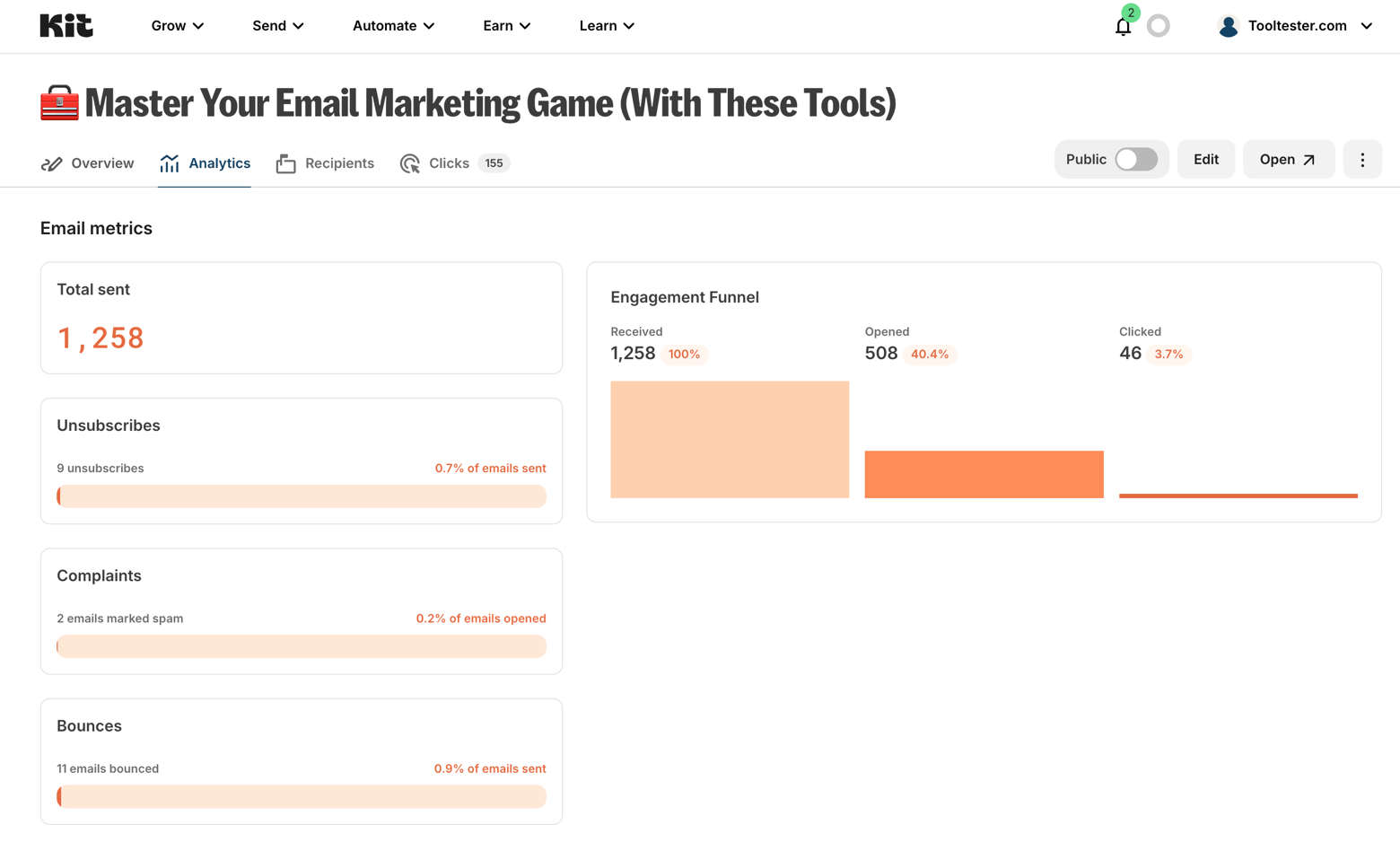
Kit's analytics dashboard
Kit is made for creators who’d rather write than wrestle with complicated tools. It’s popular among writers, podcasters, and solo founders thanks to its clean interface and monetization options.
When it comes to email tracking, Kit uses a 1-pixel image for opens and it also tracks clicks. However, unlike some newer platforms, Kit doesn’t filter out bot clicks. That means your reports may include automated activity from spam filters or security scanners – inflating your engagement stats.
On the bright side, Kit’s unsubscribe process requires manual confirmation, so bot activity won’t cause accidental removals.
Pros:
- Can use automations to clean lists
- Manual unsubscribe confirmation prevents bot-triggered removals
Cons:
- Does not filter out bot clicks, reports may include artificial activity
- No visibility into which clicks are real vs. automated
Final Tips on Email Deliverability
Now you’re blocking bot clicks and opens, there’s just one thing to remember: comparing open rates or click-through rates across platforms will be tricky.
As we’ve mentioned, each provider has its own way of dealing with this problem. If open rates are lower on one platform vs. another, it could just be that they’re filtering bot clicks and opens differently.
Bot detection is not foolproof, and when it comes to increasing ROI, it’s just one piece of the puzzle. Be sure to check our free email deliverability checklist to ensure your emails always reach the people who want to hear from you.
We keep our content up to date
4 Sept 2025 - Updated Brevo
26 Mar 2025 - Added Beehiiv
Our Methodology
This article has been written and researched following our EmailTooltester methodology.
Our Methodology